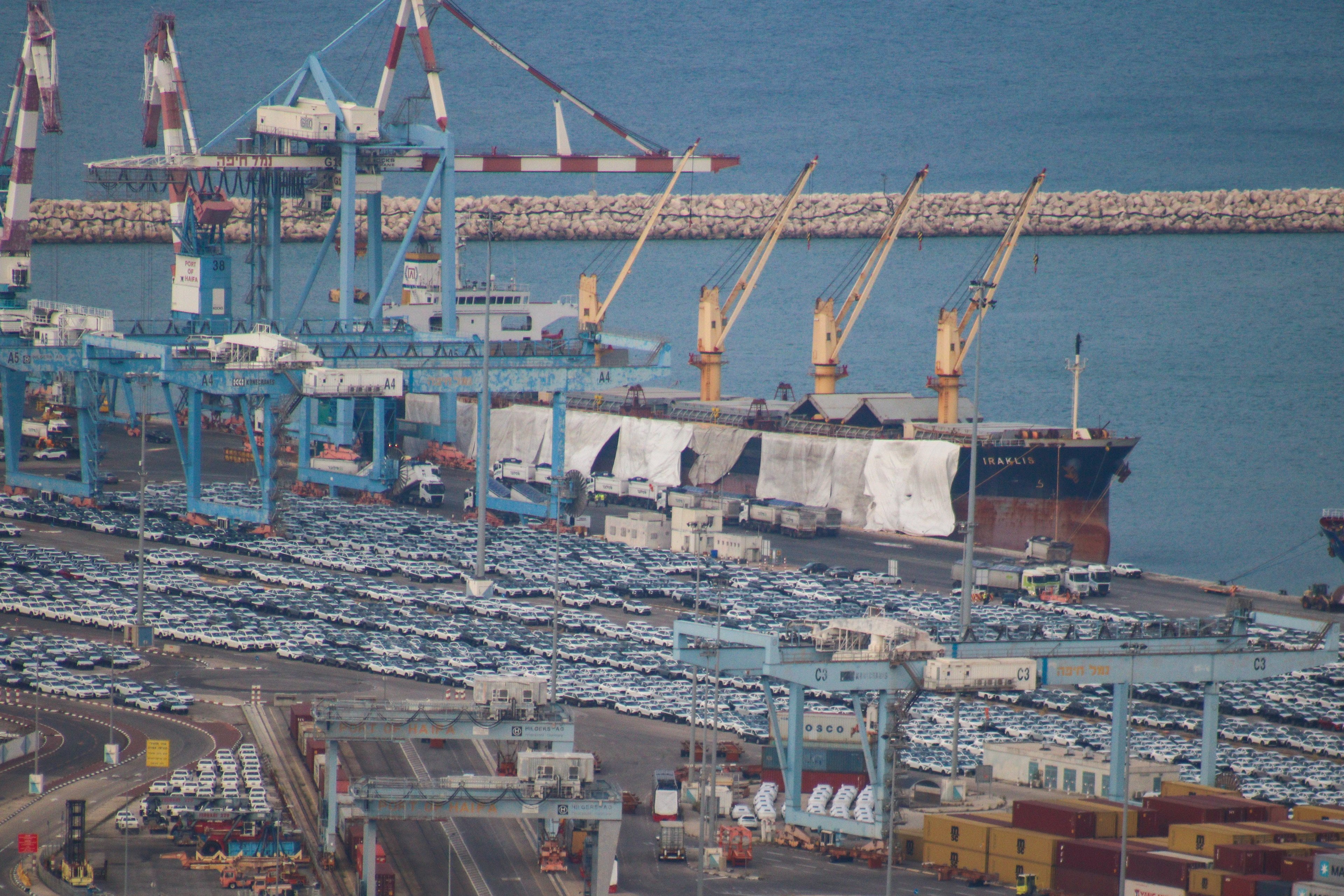Powering Industry: The Precision of Coal Discharging at Ports
At the heart of global industrial logistics lies the seamless coordination of bulk cargo operations. In this image, the cargo ship “IRAKLIS” exemplifies this intricate dance as it rests alongside the quay, poised for action. Its open cargo holds, partially veiled with protective tarps, hint at the valuable commodity within—most likely coal, a cornerstone of industrial and energy production. The dark interiors of the holds, visible even from a distance, signal readiness for unloading, a task carried out by the towering yellow cranes stationed nearby. These mechanical giants, with their elongated arms, meticulously extract the cargo, one load at a time, transferring it from the ship’s bowels to the bustling port below.

The process of bulk unloading, particularly with materials like coal, is a study in efficiency and precision. Every component of the operation, from the ship’s design to the port’s infrastructure, is optimized to handle these heavy, granular materials. The cranes, which dominate the skyline, are equipped with specialized grabs designed to scoop large volumes of coal in each cycle. Once lifted, the coal is carefully lowered into hoppers or directly onto conveyor systems. From there, it continues its journey—either loaded into trucks that transport it to nearby facilities or fed onto conveyor belts that move it seamlessly to storage or further distribution points.
The scene extends beyond the ship and cranes. Surrounding the “IRAKLIS” is an array of vehicles and equipment, all integral to the discharging process. Trucks wait in neat rows, their open beds ready to receive the coal. Conveyor systems, likely stretching into the heart of the port’s storage facilities, stand idle but prepared to spring into action. Every element is synchronized to minimize delays, as time is a critical factor in bulk shipping. Efficient unloading not only keeps shipping schedules on track but also ensures that industries relying on coal receive their supplies without interruption.
Coal, despite the global shift towards cleaner energy sources, remains a vital commodity in many parts of the world. It powers electrical grids, fuels industrial processes, and serves as a key input in the production of steel and cement. Ports like the one hosting the “IRAKLIS” are lifelines for industries that depend on a steady supply of this material. The infrastructure on display here reflects decades of refinement in handling bulk cargo, from the robust design of the cranes to the precise choreography of the supporting equipment.
This particular operation also highlights the importance of safety and environmental management in modern ports. Coal, being a dusty material, requires careful handling to prevent particulate pollution. The tarps covering the cargo hold, for instance, serve not only to protect the coal from the elements but also to reduce the spread of coal dust. Advanced ports implement additional measures, such as dust suppression systems and enclosed conveyors, to mitigate environmental impact while maintaining high efficiency.
The image of the “IRAKLIS” at work captures more than just the unloading of coal; it offers a glimpse into the intricate machinery of global trade. Every ship, crane, truck, and conveyor represents a link in a vast network that keeps essential goods moving around the world. From the extraction of coal at distant mines to its final use in power plants or factories, this complex chain relies heavily on the expertise and technology of modern ports. It’s a reminder of how deeply interconnected our world is, with industries, economies, and livelihoods tied together through the movement of materials like coal.
In the quiet efficiency of these operations, there’s a sense of awe. The sheer scale of the machinery, the precision of the processes, and the constant drive to improve and adapt reflect humanity’s capacity to meet the demands of a growing world. Ports are not just points of transit; they are hubs of innovation and efficiency, ensuring that the essential commodities fueling our industries and homes reach their destinations on time. The “IRAKLIS” and its crew are just one chapter in this ongoing story of global logistics and industrial might.